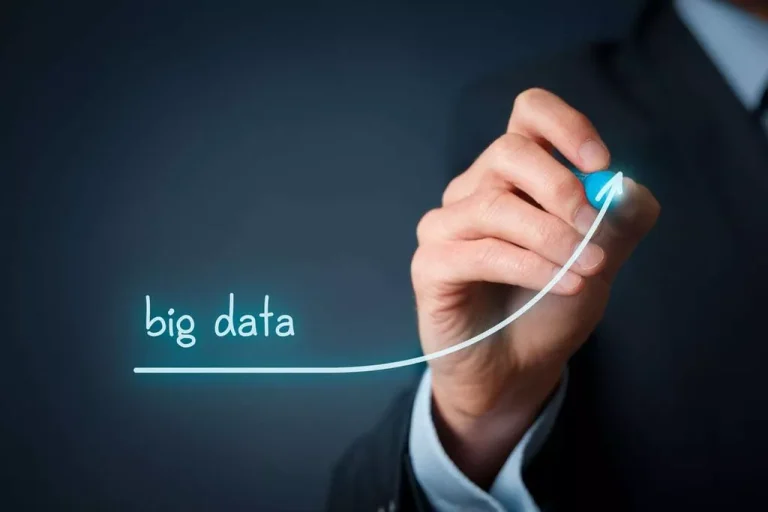Structured data is information managed within an organization to provide key decision-making insights. On the other hand, unstructured data exists in multiple Big Data in Trading sources and offers significant analytical opportunities. The value of this data depends on how it is gathered, processed, stored, and interpreted.
In governments, the most significant challenges are the integration and interoperability of Big Data across different government departments and affiliated organizations. S. Department of Education is using Big Data to develop analytics to help correct course students who are going astray while using online Big Data certification courses. A battery of tests can be efficient, but it can also be expensive and usually ineffective. Additionally, the healthcare databases that hold health-related information have made it difficult to link data that can show patterns useful in the medical field. This material is provided for informational purposes only and should not be construed as investment advice or an offer or solicitation to buy or sell securities.
Construction Management Dissertation Topics & Ideas List for 2023
Also, big data impact on industrial manufacturing process to gain competitive advantages. After analyzing a case study of two company, Belhadi et al. [7] stated ‘NAPC aims for a qualitative leap with digital and big-data analytics to enable industrial teams to develop or even duplicate models of turnkey factories in Africa’. Also, Cui et al. [15] mentioned four most frequently big data applications (Monitoring, prediction, ICT framework, and data analytics) used in manufacturing. Shamim et al. [69] argued that employee ambidexterity is important because employees’ big data management capabilities and ambidexterity are crucial for EMMNEs to manage the demands of global users. Also big data appeared as a frontier of the opportunity in improving firm performance. Yadegaridehkordi et al. [81] hypothesized that big data adoption has positive effect on firm performance.
In this study, the views of different researchers, academics, and others related to big data and finance activities have been collected and analysed. This study not only attempts to test the existing theory but also to gain an in-depth understanding of the research from the qualitative data. However, research on big data in financial services is not as extensive as other financial areas. Few studies have precisely addressed big data in different financial research contexts.
Furthermore, this research is also important for researchers who are working on this topic. The issue of big data has been explored here from different financing perspectives to provide a clear understanding for readers. Therefore, this study aims to outline the current state of big data technology in financial services. More importantly, an attempt has been made to focus on big data finance activities by concentrating on its impact on the finance sector from different dimensions. With the rise of cyber threats, data security is a top concern for the finance industry.
But, this doesn’t, mean companies have computers making all the trades without human involvement. Indeed, computers will perform some functions better, whereas some aspects of finance need human involvement. The target is to get businesses that produce attractive sentiment and have positive valuations. The relationship between a firm and a positive theme in the market can be analyzed using big data.
For example, by analyzing customer spending patterns, banks can identify potential upselling opportunities or develop personalized marketing campaigns. In today’s data-driven world, businesses are constantly seeking ways to https://www.xcritical.in/ gain a competitive edge and drive innovation. This powerful technology allows organizations to extract valuable insights from vast amounts of data, enabling them to make informed decisions and optimize their operations.
Big Data in IoT
What’s nice is that big data is making it possible for this younger group of investors to decide based on non-financial factors without minimizing the returns they get on their investment. Through massive data from digital channels and social media, real-time monitoring of claims throughout the claims cycle has been used to provide insights. When it comes to claims management, predictive analytics from Big Data has been used to offer faster service since massive amounts of data can be analyzed mainly in the underwriting stage.

To know more about the potential that data analytics holds to disrupt the finance industry, get in touch with our experts. Financial institutions are not native to the digital landscape and have had to undergo a long process of conversion that has required behavioral and technological change. In the past few years, big data in finance has led to significant technological innovations that have enabled convenient, personalized, and secure solutions for the industry. As a result, big data analytics has managed to transform not only individual business processes but also the entire financial services sector.
How does AI in trading differ from traditional trading strategies?
By mixing big data analytics and ML, you can get a deeper level of digging into the available information obtained not only from financial sources but also from any public, including web sites. After finishing the application, it will be compared with the data available in the company and, based on these data, the application will be approved or rejected. If there are too many discrepancies in the data, the application may be rejected or sent for human review. It also allows identifying identity theft or other fraudulent real estate transactions. The algorithm acts as digital platforms providing automated algorithm-led financial planning services without the need for human advisory.
- The data they are gathering allows them to take a global picture and then make decisions that are based on economically motivated investment themes.
- For other people, they at most have identity and demographic information (such as ID, name, age, marriage status, and education level), and it is not plausible to obtain reliable credit risk predictions using traditional models.
- The goal is to push the boundary by identifying non-conventional data sources and then leveraging unique forms of data with the hopes of getting an informational competitive edge.
- Moreover, big data analytics enables financial institutions to better understand their customers and personalize their offerings.
- Besides, among key benefits of big data are the lover cost of the service, and the provision of more accurate data, allowing financial market players to proactively respond to any changes.
This will allow you to collect and process data in real-time while ensuring data accessibility and protection. The platform should meet your specific business needs and provide advanced analytics capabilities. Improve your company’s productivity with fact-based, data driven decisions enabled by best-in-class Cloud solutions. Big data analytical tools, built into such a financial data analytic platform, significantly improve its work, accelerating data mining, helping to systemize it. Also for such a platform, cloud big data technologies can be used to provide quick access to databases from different parts of the world and divisions of the company. The use of big data software will significantly accelerate the analysis of a large amount of data for each customer and helps to shorten the decision-making time.
The specific challenges of big data as related to finance are a bit more complex than other industries for many reasons. Provide your customers with the latest and greatest platforms and products, target new markets, increase market share and revenue streams. Consumer Social Credit Score
To issue a loan, a large data set is usually studied, taking into account solvency, previous credit history, financial activity and other reliability factors of a potential borrower.

The financial industry has been successfully applying forecasting algorithms for almost fifty years, but only the last decade has become a real breakthrough in both trading and investing in general. The use of robotic advisers has significantly improved the process of predicting market behavior, allowing to make more informed decisions. Besides, among key benefits of big data are the lover cost of the service, and the provision of more accurate data, allowing financial market players to proactively respond to any changes. Furthermore, big data analytics plays a crucial role in investment decision making. Investment firms can leverage historical market data along with real-time information to identify emerging trends and make informed investment decisions. For instance, hedge funds can analyze social media sentiment to gauge public opinion about certain stocks or sectors before making investment moves.
This not only enhances customer satisfaction but also increases customer loyalty and retention. Big Data in the financial service industry plays a pivotal role in helping banks and financial institutions manage risks. They use predictive analytics to assess credit risks, detect fraud, and monitor market trends in real time, enabling them to spot potential risks early and take proactive measures to address them.
Overview: ESG and Impact Investing
The analytics are used to process medical information rapidly and efficiently for faster decision making and to detect suspicious or fraudulent claims. In public services, Big Data has an extensive range of applications, including energy exploration, financial market analysis, fraud detection, health-related research, and environmental protection. The finance industry needs to exploit this huge amount of data to fulfill the ever-changing and rising customer expectations and stay ahead in the increasing competition between the fintech players.
The rapid execution and complexity of AI-driven trading can lead to market volatility and unforeseen risks if not carefully monitored. Neural networks, inspired by the human brain’s structure, can learn and adapt to changing market conditions. The data present in the algorithmic trading consists of massive data streams and involves a model that measures and describes the underlying data streams.